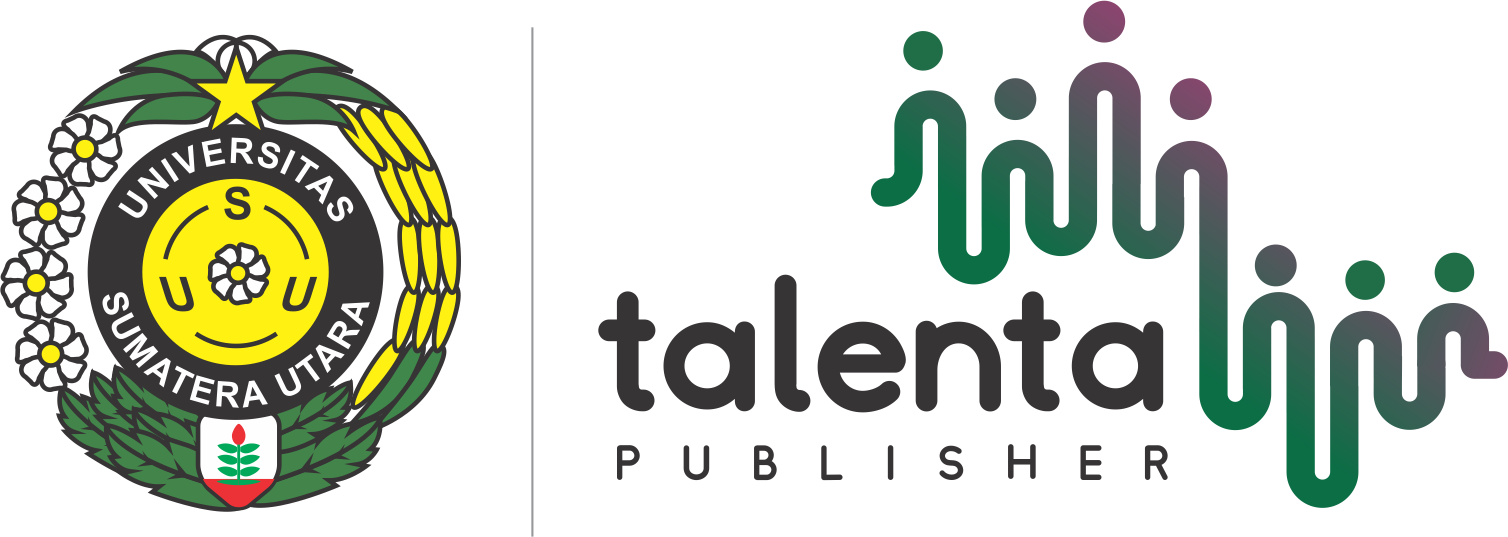Peningkatan Kualitas dan Mutu Komoditas Penyegar (Kopi, Teh dan Kakao) Melalui Pengelolaan Agroekosistem Berkelanjutan
| Authors | ||
| Issue | Vol 4 No 1 (2023): Talenta Conference Series: Agricultural and Natural Resources (ANR) | |
| Section | Articles | |
| Section |
Copyright (c) 2023 Talenta Conference Series: Agricultural and Natural Resources (ANR)  This work is licensed under a Creative Commons Attribution-ShareAlike 4.0 International License. |
|
| Galley | ||
| DOI: | https://doi.org/10.32734/anr.v4i1.1741 | |
| Keywords: | produksi aroma cita rasa perkebunan production fragrance taste plantation | |
| Published | 2023-02-22 |
Abstract
Teh, kopi dan kakao merupakan komoditas penyegar yang mengandung konstituen bioaktif, yaitu alkaloid purin, kafein, teofilin, dan teobromin yang mampu menstimulasi dan memberikan efek menenangkan saat dikonsumsi. Lebih dari 65% populasi dunia mengonsumsi teh, kopi dan kakao di seluruh dunia. Indonesia merupakan salah satu Negara penghasil dan penyuplai 9% ketersediaan produksi bahan penyegar global. Tingginya serangan OPT menyebabkan hasil produksi komoditas penyegar sulit mengalami kenaikan sehingga belum mampu mengimbangi tingginya permintaan terhadap komoditas penyegar. Upaya pengelolaan agroekosistem sangat diperlukan untuk menekan populasi dan intensitas serangan hama serta mengurangi ketergantungan petani terhadap pemanfaatan bahan-bahan kimia pada budidaya tanaman kopi, teh dan kakao. Pengelolaan agroekosistem dalam pengendalian hama merupakan salah satu metode dalam Pengendalian Hama Terpadu (PHT) yang diterapkan dengan pendekatan ekologi melalui pengaturan kegiatan dalam ekosistem pertanian sesuai dengan fungsi-fungsi pengelolaan yang tepat dan terarah.
Tea, coffee, and cocoa are refreshing commodities that contain bioactive constituents, namely purine alkaloids, caffeine, theophylline, and theobromine which can stimulate and provide a calming effect when consumed. More than 65% of the world's population consumes tea, coffee, and cocoa worldwide. Indonesia is one of the producing and supplying countries for 9% of global freshener production. The high number of pest attacks has made it difficult for the production of refreshment commodities to increase so they have not been able to keep up with the high demand for refreshment commodities. Efforts to manage agroecosystems are needed to reduce the population and intensity of pest attacks and reduce the dependence of farmers on the use of chemicals in the cultivation of coffee, tea, and cocoa. Management of agroecosystems in pest control is one of the methods in Integrated Pest Management (IPM) which is applied with an ecological approach through regulating activities in agricultural ecosystems by appropriate and directed management functions.






